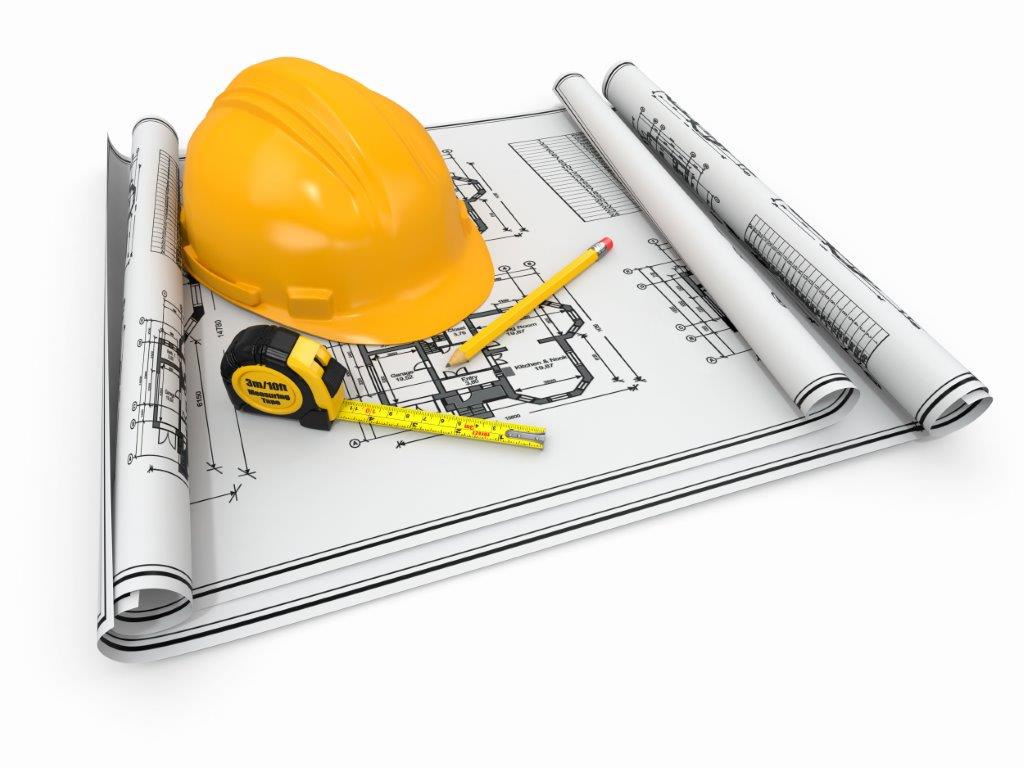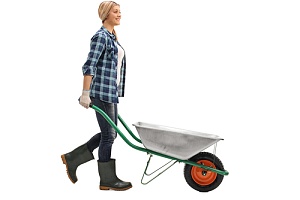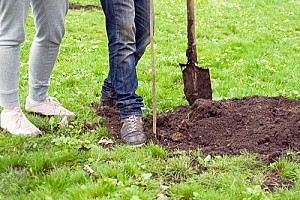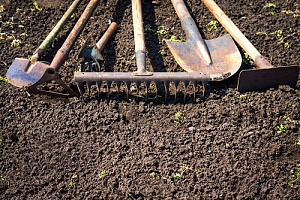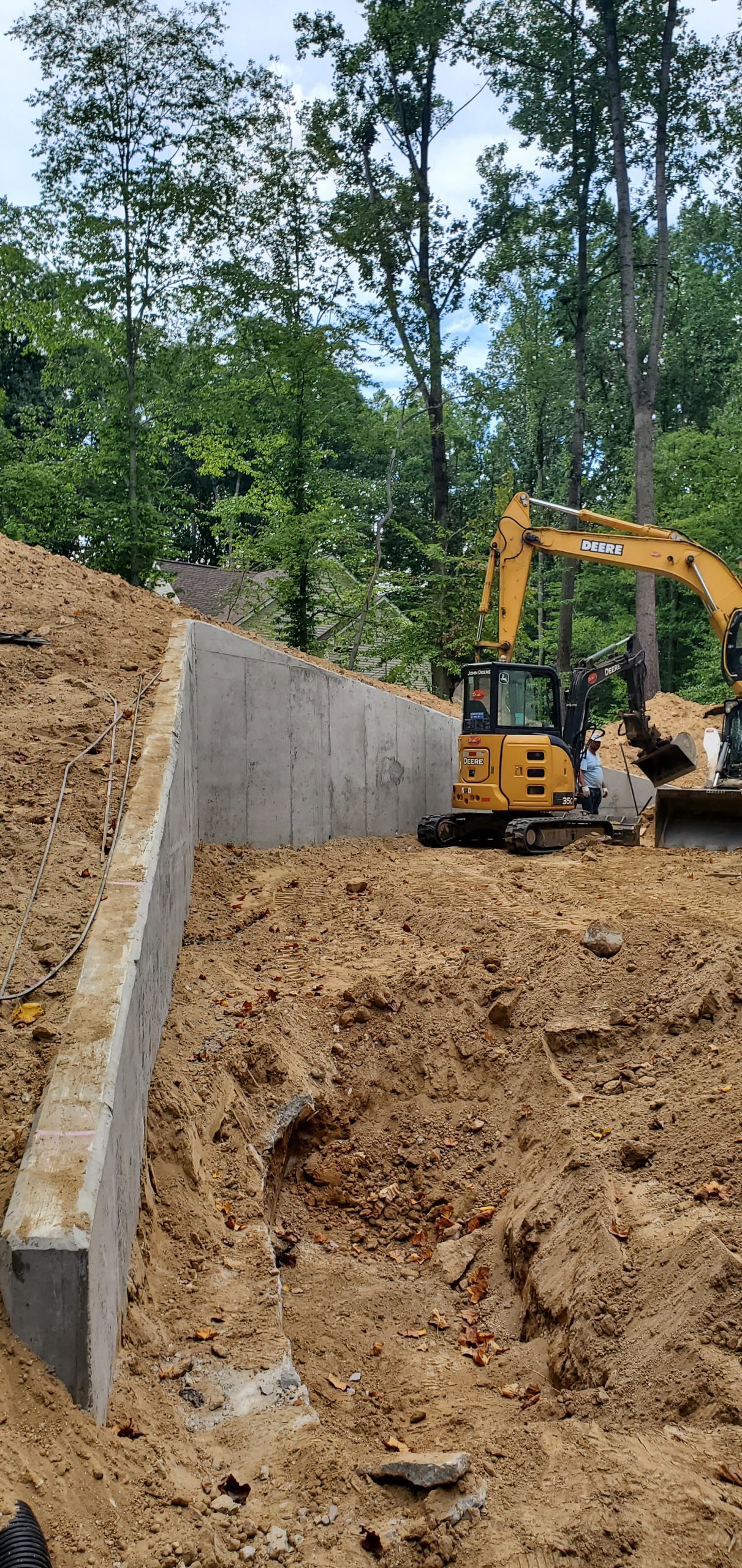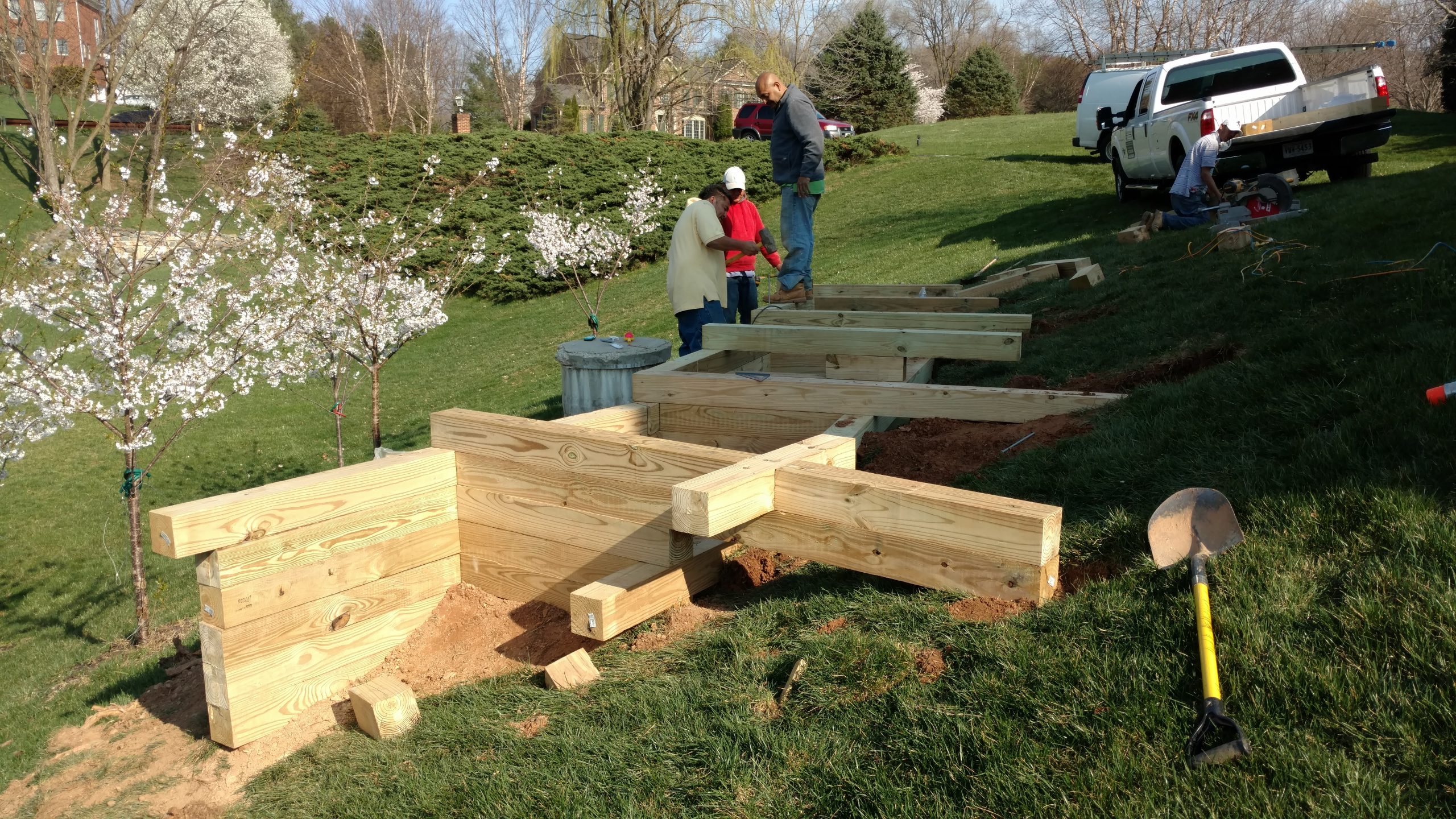 You can’t help but notice, retaining walls are everywhere. These walls provide for improved infrastructure throughout the USA. From roads, buildings, power lines and erosion control, retaining walls help capture and retain usable space. After serious consideration, you’ve decided to build a retaining wall. You know where to put the wall and the results you want. Below, I will explain the basics of all retaining walls. Depending on the type of materials, height, depth of the wall, will determine if you need a permit and or a professional contractor. Let’s read below and learn the types of walls, basic construction, drainage and what will work best for you.
You can’t help but notice, retaining walls are everywhere. These walls provide for improved infrastructure throughout the USA. From roads, buildings, power lines and erosion control, retaining walls help capture and retain usable space. After serious consideration, you’ve decided to build a retaining wall. You know where to put the wall and the results you want. Below, I will explain the basics of all retaining walls. Depending on the type of materials, height, depth of the wall, will determine if you need a permit and or a professional contractor. Let’s read below and learn the types of walls, basic construction, drainage and what will work best for you.
Types of Retaining Walls
 Masonry
Masonry
These walls are typically built of cinder block and or brick.
Natural Stone
This material you can find at your local stone center. This material comes from the quarry. At the quarry this material is cut into uniform sizes. This allows for a uniform placement of your wall.
Pressure Treated Timbers
6” x 6” timbers and railroad ties come to mind. This material can be cut to size and placed with steel rods / spikes. To enhance the strength of the wall, you can install anchor. This anchor is referred as a deadmen.
Stacked Boulders
This material provides a practical solution to changes in the elevations of your landscape. The size and weight provide for longevity, when placed correctly. The natural material allows placement in serpentine manners with ease, while maintaining the natural look of the existing landscape.
Concrete
Around since 600 BC, concrete has provided a huge advancement in construction. Used by the Romans and today, concrete provides for improved living in all our daily lives. When installed properly a concrete retaining wall can provide years of service.
Retaining Wall Basics
Base
In construction, a solid base is the foundation for a successful project, the same is true for the retaining wall. You want to excavate to a depth where you have solid bearing. Based on the type of wall, you will need #57 stone, 21a (crushed run) or a concrete footing for the base.
Wall
As previously discussed, your wall can be constructed of brick, cinder block, natural stone, wood timbers and or boulders. All will require a solid and level foundation for durability and ease of installation.
Drainage
The importance of drainage for your retaining wall cannot overlooked. Proper drainage behind the wall, will limit the pressure of wall rotation. With stone, filter fabric, weep holes and ADS pipe, you can extend the life of your newly built wall.
Backfill
This is the material you place behind the wall. Excavated spoils from your foundation prep work can be used, if the material is suitable. ¾” stone, often referred as #57 stone, is used with filter fabric for enhanced drainage and the backfill of the retaining wall. Order additional fill dirt if necessary.
Weep Holes
This is part of the wall and drainage installation, an important process. Weep holes allow water to escape from behind the wall. These holes need to be spaced at regular intervals for improved drainage and appearance. The higher and longer the wall, the more weep holes needed.
Building Process
Layout
Determine where you want the wall to be installed. Use a string line and paint to mark the area. You can then visualize the height of the wall. This will be valuable information later. Mark the surrounding construction area with white paint.
Contact Ms. Utility
Prior to excavation work, contact Ms. Utility at 811. Provide all requested information and that the construction area has been marked with white paint.
Planning
With the length and height of the wall, you can determine how much material you need. A wall 30 ft. length by 8 ft. height is 240 square feet. This information will help you determine how much material you need for your retaining wall. The professionals at your supply house provided additional service with this information.
Base
As previously mentioned, a solid base provides for a strong foundation. Whether you dig by hand or machine, be sure to be safe. Manual and mechanical work need to be respected, know your limits. Try to place your spoils adjacent to the wall backfill. This can save you additional time and energy.
Foundation
This is where you will place a level stone bed, 21a (crushed run) or a concrete footing. When complete, be sure the base material has been compacted and level. This will allow for easier placement of the wall material.
Wall Install
With a solid and level foundation, the wall installation is simplified. You can now stack the material of your choosing. Your previous attention to detail to the foundation makes work easier. You will have to check your work as you go, however you can see the added benefits from a solid and level foundation.
Backfill
With the wall in place, you can now begin to backfill the area. Prior to backfill, be sure to place your weep holes and perforated drainage pipe into position. You want to wrap the pipe and stone with filter fabric. The filter fabric prevents dirt (sediment) to enter the drainage pipes. When you prevent sediment infiltration, the drainage pipe will stay clear of dirt and provide years of service. The drainage now in place, you can now backfill the area with the excavated spoils from your excavation. If you need additional fill dirt, contact a local supplier. Make sure not to order to much. Excess dirt removal can be costly.
Grading
With the drainage and backfill complete, you can now focus on the final grade. You wan to rake up the area and soften the contour lines. Once complete, you can apply topsoil, seed and straw or sod. Sod will provide a finished look. With the sod placed, be sure to provide for proper watering as per the supplier’s instructions.
Railings
New retaining walls may need railings to be code compliant. If you built a wall without a permit, the railing option will be left to you. Look at your wall, if someone can fall from the top of the wall, please install some kind of safety rail for the benefit of you, your family, loved ones and guests. Safety rules the day.
Why Install a Retaining Wall?
A retaining wall can provide for additional level space. When properly installed you can reap the rewards of additional landscaped area for entertainment and enjoyment.
Tools for Construction
- Safety Glasses
- Sting Line
- Hammer
- Mallet
- Chisel
- Masonry Saw
- Wooden Stakes
- Circular Saw
- Spikes
- Nails
- Shovels
- Levels
- Tamper
- Tape Measure
- Backhoe
- Skid Loader
- Work Boots
- Utility Knife
- Plastic (6 mil poly)
Basic Steps
- Dig into the hillside.
- Stretch a sting line and secure with wooden stakes at each end.
- Dig out this area for your base material and foundation.
- Install the compactable material.
- Compact the material.
- Check for levelness.
- Stack your wall materials.
- Check for levelness each course.
- Use your mallet to level and straighten each course.
- Apply adhesives, steel spikes, etc., to each course.
- Continue working to your desired height.
- Install appropriate drainage.
- Backfill are with excavated spoils.
- Install final grade material, seed and straw or sod.
Building a retaining wall can transform your yard. This can increase your usable space.
Here are some things to consider:
- Surrounding Features
- Dirt Placement
- Wall Height
- Grading
- How to Cut Cinder Blocks
Thoughts
Building a retaining wall is a lot of work. Before you get started make sure you have a plan and layout. Always call Ms. Utility. You want to be start and complete the job as quickly as possible. You want to avoid erosion due to rain because of prolonged construction time. Make sure you have help available, always have a helper. Your helper can reduce the stress on the body and be available in case of an accident. Remember the materials you are using are heavy and can cause injury.
General Questions
Do I need drainage behind retaining wall?
Yes, always provide for proper drainage.
Should you glue retaining wall blocks?
I recommend using manufacturer approved adhesives. Check with your supplier for additional suggestions.
What is the best type of retaining wall?
Wood timber and inter-locking-concrete-block walls are great for the DIY. Concrete, mortared masonry and poured in place concrete walls are best left to the professional.
Do you need landscape fabric behind retaining wall?
Yes, use filter fabric to prevent sediment from entering your drainage lines and stones.
Can cinder blocks be used for a retaining wall?
Yes and this work is best left to the professional mason for proper installation.
What is the easiest retaining wall to build?
Timber retaining walls and interlocking block are the easiest to install.
How deep should a footing be for a retaining wall?
All footings should be installed below the frost line.
Do I need a footer for a retaining wall?
Footings provide for a solid foundation and durability for your new wall.
Do all retaining walls need weep holes?
Yes, do not neglect this important step.
Do retaining walls need rebar?
Retaining walls built of poured concrete usually require the proper spacing and installation of steel reinforcement bars.
Do you fill cinder blocks with concrete?
I recommend the addition of concrete to the hollow chambers of the cinder block for additional strength.
Considerations for Retaining Wall Success
Building a retaining wall involves several key considerations to ensure long-term stability and effectiveness. First, proper drainage is essential to prevent water pressure buildup behind the wall. Effective drainage includes using weep holes, filter fabric, and perforated drainage pipes. Additionally, backfilling with suitable material, such as #57 stone, enhances the wall’s durability. Proper grading and the right type of wall materials also play a crucial role in achieving a successful installation. For your project, selecting high-quality materials and following construction guidelines will provide the best results.
